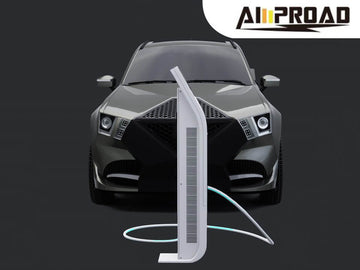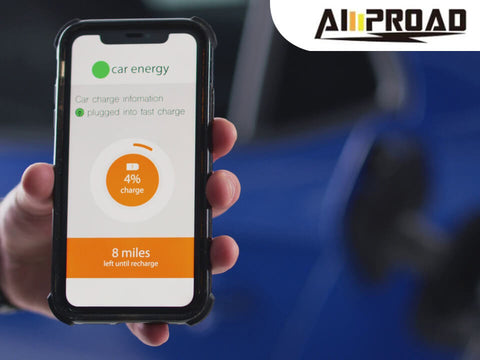
Electric vehicles are zooming onto the scene, but can they all juice up together? Let's explore the world of charging protocols and see if Tesla's Supercharger or Tesla destination charger network speaks the same language as other charging stations. Have you ever pulled up to a charging station only to find it incompatible with your electric car? This can be frustrating, especially on long road trips. The key to universal charging lies in a set of communication standards called OCPP. But is Tesla on board with this, or do they march to the beat of their own drummer?
Whether Tesla Is OCPP Compliant?
Tesla operates on a proprietary system for both its Supercharger and Destination Charger networks. These networks don't currently communicate using OCPP, the common language that allows seamless interaction between different EV charging stations and networks. This means that while Tesla's system offers some functionalities similar to OCPP, like identifying vehicles and monitoring charging status, it functions in a closed loop. This limits access for other EVs and restricts flexibility for drivers in terms of network options and billing choices.
However, the future of Tesla and OCPP protocol might not be set in stone. There have been hints of a potential shift. Tesla's participation in limited pilot programs where they opened a few Supercharger stations to other EVs and recent openings in Norway and Sweden suggest they might be considering wider network integration.
Looking ahead, there are compelling reasons why Tesla might eventually embrace OCPP. Opening their Supercharger network to other EVs could significantly improve station utilization and potentially boost revenue. Additionally, integrating with OCPP could enhance Tesla's brand image as a leader in fostering a more collaborative EV ecosystem and open doors to new markets where OCPP reigns supreme.
Of course, there are challenges to consider as well. relinquishing some control over the network and the technical complexities of integration are significant hurdles. Additionally, opening the network to competitors could introduce competition for charging spots and potentially increase wait times for Tesla owners.
What is OCPP (Open Charge Point Protocol)?
Imagine a gas station where every pump only dispenses Shell gas. That's kind of how things can be with EV charging if stations don't use common languages. Thankfully, a solution exists: Open Charge Point Protocol (OCPP). Think of OCPP as a universal translator for EV charging stations (EVCS) and charging networks both Level 2 EV charger stations and the faster DC fast charger stations. It allows them to communicate seamlessly, regardless of brand. With OCPP, a car can identify itself to an EVCS, negotiate charging parameters (like power output and billing), and receive the electricity it needs. So, is OCPP the lingua franca of EV charging? Not quite yet, but it's becoming increasingly important for interoperability. Now, let's see if Tesla plugs into this conversation and if their EVCS network speaks the same language as others.
Does Tesla use a proprietary system for its charging network?
Tesla has carved its own niche in the EV world, and that extends to charging. They boast two main charging networks:
- Supercharger Network: A high-powered network designed for long-distance travel. Imagine a network of gas stations specifically for Teslas, offering super-fast fueling to get you back on the road quickly. These stations pump out significant amounts of power, allowing you to add hundreds of miles of range in a short amount of time. However, these stations are not compatible with other EVs due to Tesla's proprietary system.
- Destination Charger: Tesla destination charger is typically found at hotel, restaurant, and other businesses. It’s usually often classified as level 2 charger and offers slower charging than Supercharger but is convenient for topping off your battery while you go about your day. Think of them as plugging your Tesla into a regular outlet on steroids. Again, these are exclusive to Tesla vehicles.
So, to answer the question, yes, Tesla uses a proprietary system for both its Supercharger and Destination Charger networks. They don't currently communicate using OCPP, the common language we discussed earlier. This means that other EVs can't use Tesla's Superchargers or Destination Chargers, and Teslas can't necessarily use charging stations on other networks (unless they use an adapter).
OCPP vs. Tesla System
Now that we've explored Tesla's charging network and its proprietary system, let's see how it compares to OCPP, the common language for EV charging.
How does OCPP facilitate communication between chargers and networks?
Think of OCPP as a conversation between two sides: the EV charging station (EVCS) and the charging network (like a charging app or service provider). Here's how it works:
- Identification: The EVCS first identifies itself to the network, providing information like its location, available charging ports, and power output.
- Authorization: The network then verifies the car's authorization to use the station. This might involve checking the car's unique identifier or connecting to the driver's account.
- Negotiation: Once authorized, the car and the EVCS can negotiate charging parameters. This includes things like power level, charging duration, and potentially even cost.
- Monitoring and Data Transfer: Throughout the charging session, the EVCS keeps the network updated on the charging status, including energy delivered and any potential issues. Additionally, the network can send commands to the EVCS, such as remote starting or stopping the charge.
By establishing a standardized communication protocol, OCPP ensures seamless interaction between different EVCS and networks. This allows for features like:
- Universal access: With OCPP, any OCPP-compliant EV can charge at any OCPP-compliant station, regardless of brand or network affiliation.
- Real-time information: Drivers can access real-time information about charging station availability, pricing, and wait times through the network's app.
- Flexible billing: Networks can offer various billing options, such as pay-per-use or subscription models.
Does Tesla's system offer similar functionalities?
Tesla's proprietary system offers some functionalities similar to OCPP:
- Identification: Tesla Superchargers and Destination Chargers identify Tesla vehicles through their unique identifiers.
- Authorization: The system verifies authorization through the Tesla app or car's connection to the owner's account.
Monitoring and Data Transfer: Tesla monitors charging status, energy delivered, and potential issues.
However, there are key differences:
- Limited access: Tesla's system restricts access to Tesla vehicles only.
- Limited network data: Information about charging station availability and wait times might not be readily available outside the Tesla app.
- Limited billing options: Billing is likely handled directly through Tesla, with potentially fewer options compared to OCPP networks.
To sum up, while Tesla's system offers some functionalities similar to OCPP, it operates in a closed environment, limiting access and flexibility for both drivers and other EV manufacturers.
Future of Tesla and OCPP
With the EV landscape rapidly evolving, the question remains: will Tesla join the OCPP party?
Has Tesla expressed any interest in adopting OCPP?
So far, Tesla hasn't officially announced plans to integrate with OCPP. They've focused on building their own robust charging network, offering significant advantages for Tesla owners:
- Speed and Convenience: Tesla's Supercharger network boasts impressive charging speeds and a focus on convenient locations, making long-distance travel a breeze for Tesla drivers.
- Control and Integration: Tesla maintains complete control over its network, ensuring a seamless user experience within the Tesla ecosystem.
However, there have been some hints of a potential shift:
- Pilot Programs: Tesla has participated in limited pilot programs where they opened a small number of Supercharger stations to non-Tesla vehicles using adapters.
- Norway and Sweden: Recently, Tesla opened a few Superchargers in Norway and Sweden to other EVs, potentially testing the waters of wider network integration.
These limited efforts suggest Tesla might be considering future integration, but there's no guarantee.
Could there be benefits for Tesla to integrate with OCPP?
While Tesla's current approach offers advantages, integrating with OCPP could bring some significant benefits:
- Increased Network Utilization: Opening Superchargers to other EVs could significantly improve their utilization rates, especially during off-peak hours. This could translate to increased revenue for Tesla.
- Enhanced Brand Image: Embracing OCPP could portray Tesla as a leader in fostering a more open and collaborative EV ecosystem, potentially boosting brand image.
- Access to New Markets: OCPP compatibility could allow Tesla to tap into new markets where OCPP is the dominant standard. This could be crucial for future expansion plans.
Challenges to Consider:
There are also potential challenges to consider:
- Loss of Control: Integrating with OCPP might require some level of relinquishing control over the network, which could go against Tesla's current strategy.
- Technical Integration: Integrating a complex network like Tesla's Superchargers with OCPP could be a significant technical undertaking.
- Competition: Opening the network to other EVs could introduce competition for charging spots and potentially increase wait times for Tesla owners.
Overall, the decision to adopt OCPP is a complex one for Tesla. While there are potential benefits, challenges also need careful consideration.
The Future Remains Unwritten:
Only time will tell if Tesla decides to integrate with OCPP. However, the growing adoption of OCPP and the potential advantages it offers suggest that some form of future collaboration might be a win-win for both Tesla and the broader EV ecosystem.
Ultimately, the decision to adopt OCPP is a complex strategic move for Tesla. While the potential benefits are undeniable, the challenges require careful evaluation. Whether Tesla decides to fully integrate with OCPP or forge its own path, one thing is clear: the future of EV charging is likely to see more collaboration and standardization, paving the way for a more seamless and accessible charging experience for all electric vehicle drivers.





